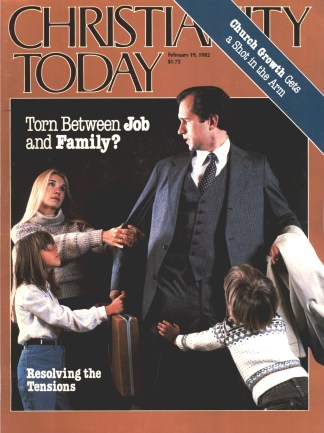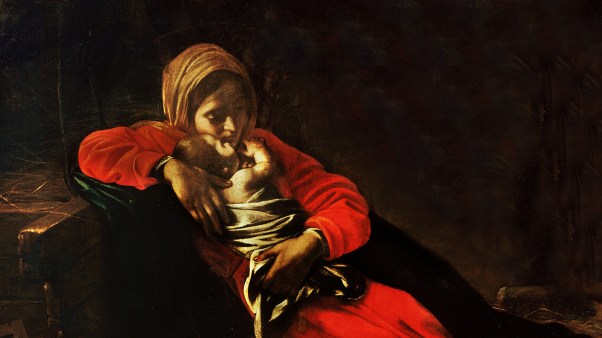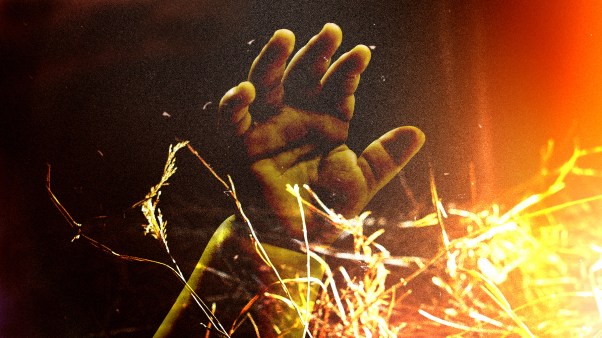Where Is Wisdom To Be Found?
Old Testament Wisdom: An Introduction, by James L. Crenshaw (John Knox, 1981, 285 pp., $9.95), is reviewed by Robert K. Johnston, associate professor of religion, Western Kentucky University, Bowling Green, Kentucky.
There has been wide scholarly interest shown in Israel’s wisdom literature in the last 20 years. A number of significant studies have been produced (von Rad, Brueggemann, Murphy, Scott, for example), but no generally accepted introduction has surfaced. James Crenshaw, a professor of Old Testament at Vanderbilt and one of America’s leading wisdom scholars, has attempted to fill the gap with this volume. But despite its usefulness, the book has sufficient problems to make unlikely its widescale adoption as a textbook, particularly among evangelicals.
Crenshaw begins by tackling the difficult problems of definition. How is wisdom’s multifaceted nature to be characterized? For Crenshaw, wisdom distinguishes itself in its “conviction that men and woman possess the means of securing their well-being—that they do not need and cannot expect divine assistance” (p. 24). Instead, “the Creator [has] left human survival to its own devices” (p. 19).
This secular characterization of wisdom leads Crenshaw to adopt several questionable conclusions. First, rather than creation theology being understood as basic to wisdom’s posture, the perceived focus on the Creator within wisdom literature is viewed as an intrusion upon wisdom’s self-sufficiency. That intrusion increases until Yahwism and wisdom are finally joined.
Second, having understood wisdom as the search for order that would assure well-being, Crenshaw sees skepticism as an inevitable result wherever reality is faced honestly and the limits of human reason recognized. Such skepticism arose early in Israel’s history, according to Crenshaw, and became a viable alternative to Yahwism, particularly among “those who failed to discern evidence that God actually controlled history” (p. 208). But surely the questioning of God in Old Testament wisdom literature is far from the skepticism that Crenshaw posits. Goethe and Rousseau, rather than Job and Qoheleth, seem ultimately to be Crenshaw’s sources.
Third, the biblical traditions about Solomon’s wisdom are judged by Crenshaw to be “fantasy” (p. 44): “Every account teems with material typical of popular legend and folklore” (p. 49). Aside from raising important issues concerning biblical authority and inspiration, such a conclusion seems unwarranted given the data. The description of Solomon’s nature wisdom, for example, is consistent with an early date, as is the linking of wisdom and riches. Furthermore, the text’s clear intention seems historical.
Finally, in an effort to divorce wisdom from Yahwism, Crenshaw downplays any influence by wisdom on the law and prophets. While correct in doubting whether Isaiah and Amos were formerly sages, he fails to deal adequately with the clear interaction that does exist.
Although Crenshaw’s skeptical conclusions seem unwarranted by the biblical texts, his discussion nevertheless has much to offer the discerning reader. Particularly helpful are his discussions of the individual wisdom books (although Song of Songs is omitted). Proverbs is understood as enabling the Israelites to cope with life; Job and Ecclesiastes as empowering them to face sickness and death; Sirach as integrating sacred history and worship into sapiential discourse; and Wisdom of Solomon as preserving the wisdom heritage by transmitting it in a new Hellenistic world view.
Crenshaw’s notes are extensive and his selected bibliography extremely useful. This book will challenge your thinking. Even when you disagree you will find yourself being stretched.
The Modern Cop-Out
The Interruption of Eternity: Modern Gnosticism and the Origins of the New Religious Consciousness, by Carl A. Raschke (Nelson-Hall, 1980, 271 pp., $18.95), is reviewed by George W. Jones, director, religious programs, and professor of higher education, Ball State University, Muncie, Indiana.
Gnosticism, that heresy against which the ancient church struggled and largely triumphed, has been reincarnated in the new religions of our day. Carl Raschke, professor of religious studies at the University of Denver, argues this thesis comprehensively and persuasively by applying philosophical and theological analysis in order to understand Eastern-oriented and psychotherapeutic cults.
Taking seriously the content of the new religions, as well as their function in human society and personality, Raschke holds that Westerners “are all becoming Gnostics of a sort” (p. 243). Especially does he see Gnosticism as a very attractive alternative for the intellectual community with its declining faith in rationality, historical progress, a benevolent and understandable universe, and a perfectable world society. Even among mainline liberal churches, Gnosticism seems to have a special appeal, probably for the same reasons. Idealism, certainty, and a kind of spirituality can, thereby, be maintained apart from a return to Christian orthodoxy.
Raschke identifies the common Gnostic threads in some 50 philosophical/religious thinkers and movements over the last two millennia. These are as varied as alchemy, Christian Science, kabbalism, nazism, and the new narcissism. He finds in each at least one of the common threads or basic presuppositions that make up the skein of his Gnostic hypothesis. (1) They have “a preference for ‘cosmic insight’ over empirical caution and scrutiny.” (2) They follow a “recourse to elitist notions of self-salvation.” (3) They look “to the occult wisdom of the past for inspiration.” (4) They have “a prepossession with the evil of the existing order, with the fatality of life in the present” (p. 24). Thus, saving oneself from a doomed order through a hidden wisdom into a new state marked by timelessness and changelessness becomes Raschke’s working definition of Gnosticism.
Raschke is better at diagnosis than at prescribing solution. However, he closes his book by sounding an alarm: the Gnostic trends in our day are dangerous. A retreat from “the ambiguities, contingencies and incalculable factors of human existence” (p. 243) are not only a Christian heresy but also social treason. He calls on people of faith to correct the Gnostic mistranslation, “the Kingdom of God is in you,” to the textually accurate one, “the Kingdom of God is in your midst.”
Raschke is writing for a scholarly audience, albeit one that needs not share his disciplinary specialties. Many ministers and faculty, who are trying to understand the significance of the cults and the occult in this latter quarter of the twentieth century, will find this book a valuable tool. To be aware of an opponent is the first step in preparing to engage him.
The Reality Of Reconciliation
The Ministry of Reconciliation: A Study of Two Corinthians, by French L. Arrington (Baker, 1980, 1978 pp., $3.95), is reviewed by Paul Elbert, postgraduate student in New Testament in the University of London, King’s College.
At the beginning of this century the British theologian James Denney described 2 Corinthians 5:14–21 as the locus classicus on the death of Christ in Paul’s writing. Denney was sure that wherever one began in the gospel story, he would inevitably be led to the Cross.
He thought substitutionary atonement was the most obvious teaching of the New Testament, believing that God’s offer of assurance of salvation to sinners was an assurance rooted in experience and the best constraint to discipleship.
In his last book Denney noted, “Just because the experience of reconciliation is the central and fundamental experience of the Christian religion, the doctrine of reconciliation is not so much one doctrine as the inspiration and focus of all.”
In citing this quotation as a key to the church’s life and witness (p. 27), French Arrington, the gifted American New Testament scholar who teaches at the new Church of God School of Theology, takes up the theme of reconciliation in a popular and practical exposition of II Corinthians. The concept of reunion of the separated is applied to every level of our personal relationships, displaying a deep understanding of Paul’s pastoral agony as he attempted to restore genuine fellowship in that most spiritual of his letters.
Those reconciled to God are themselves to be reconcilers in that faith does not keep silent. But this testimony should be strictly honest and free of exaggeration. Truthful speech is one of God’s graces (6:6–7a). Any superficial testimony that disregards the real nature of sin and minimizes the Cross is not the gospel of Jesus and Paul. Since Christianity then is a religion of relationships, Paul’s feelings for the Corinthians can serve as a model for us when alienating experiences arise.
The sympathy with which the author handles the motif of power in weakness is a tonic for faith. Paul’s hardships and sufferings did not at all indicate a lack of ministerial success. In fact, he boasted in weakness. How strange that is to our modern values! “God cannot help or use self-sufficient people but only those who have a deep dependence on Him. Where there is weakness and openness to divine grace His mighty power comes clearly in view” (p. 167).
Yet more deference could have been given to the painful physical ailment or thorn (12:1–10) as the means of making God’s power evident in weakness. It would have been helpful to state explicitly that it can be God’s will for a believer to experience physical illness. Resignation and obedience can then set one free to love God and others.
This is a serious book for serious times, but it is vibrant and alive. Its short, clear sentences are penetrating and easy to read. I believe it is the best lay person’s commentary on II Corinthians in print. In its contemporary relevance, it may even surpass the older (1958) entry in the Tyndale series. The attractive topical format holds the reader’s attention, and the bonus of its numerous grammatical insights strengthens the discussion. Pastors looking for study material for Sunday schools or house groups will certainly be well served.
What Is Christian Art?
Signs of Our Times, by George S. Heyer (Eerdmans, 1980, $5.95, 98 pp.), is reviewed by Calvin Seerveld, senior member in philosophical aesthetics, Institute for Christian Studies, Toronto, Ontario, Canada.
This book contains the Gunning Lectures given at the University of Edinburgh in 1975; each lecture takes about 10 modest pages of print. The style is engaging, and Heyer selects specific artists for comment. He makes limited points, and does not pontificate through easy generalizations.
Humans are created by God to need images as well as ideas (p. 9), but modern man has turned images into idols to satisfy his senses (p. 4), or to have art serve as a religion that has no creed but the secular salvation of our technological society (p. 21). However, when the premillennial ideology of the Russian constructivists and U.S. artists of the 1930s ran amuck (p. 25), says Heyer, the exhibitionist art of “action paints” and the gnostic culture of happenings and “conceptual art” became the introverted, substitute rationale. “Consequently, our culture has bred an elite, a cadre of gnostic priests, the elect, who dispense to the masses the arcane wisdom embodied in art. Most of the wisdom is foolishness, of course, in perfect fidelity to its subject matter, but it is spoken and heard in an awesome aura of authority” (pp. 31–2).
Heyer wishes to correct the Protestant tradition that usually has disfavored art (pp. 3, 60), by developing John Calvin’s passing comment that “sculpture and painting are gifts of God” (Institutes, I, xi, 12). His basic thesis is that “beauty always gleams in the creation, and we can find it” (p. 41).
Heyer calls himself a Calvinist, but the fabric of his reflection is basically structured, it seems to me, by the Beauty theology of Thomas Aquinas, with an updated bow to Maritain, and especially to Gilson. The positive half of the book, as I understand it, is an apology for secular modern artists who have used “the resources that their Maker has provided … ‘fittingly’ in their efforts to add to our world objects whose beauty I, at any rate, see no need to defend” (p. 54). In spite of their ideology, Heyer means, when Léger or the cubists produce beautiful art, they are crypto-servants of God. “The beautiful objects that men make bear their own testimony to Jesus Christ” (pp. 53, 42).
I think this position and line of argument will find favor with many evangelicals who are reassessing the stance of the (Protestant) church toward art.
Since Heyer says his statement is tentative, perhaps the following problems could engage us all in discussion:
1. Can aesthetic theory resting on the traditional concept of beauty (which, incidentially, inclines one to be partial to classical Greek statuary as the artistic norm [pp. 43–4]) ever escape a natural theology of sorts, where art and artists by nature witness to the beauty of God (p. 46)?
If one adopts a covert natural theology, certainly his Calvinism is gone. But more important, I think, one misleads people in their understanding of what is going on historically in modern art.
2. Can we Christians find ways to recognize that Matisse and other gifted artists have been used, perhaps, as God used Cyrus (cf. Isaiah 45) to face Christ believers and disbelievers with ways God would have us know, without making Matisse and Picasso naturaliter Christians, whom Heyer says prefigure the new earth in their art (p. 58)?
Heyer’s indictment of mainline modern art as a gnostic idolatry may be largely correct. But if that is true, then his conversation with it is curiously uncritical and congenial.
Thomas says correctly somewhere, I recall, that bad arguments for a good thesis really undercut the truth. For us to have a sound base and perspective from which to assess secular art, and to motivate and understand art that will be truly sensitive to the lordship of Jesus Christ we will need, I believe, not theological essays on modern art (which speculate on Jesus’ beauty), but a down-to-creaturely-earth, Christian philosophical aesthetic theory.
Muddle In The Middle
The Forty to Sixty-Year-Old Male, by Michael E. McGill (Simon and Schuster, 1980, 298 pp., $11.95), is reviewed by Creath Davis, executive director, Christian Concern Foundation, Dallas, Texas.
Michael E. McGill’s book is based on the results of a four-year major research effort focusing on middle-aged men and their crises. Male midlife crisis literally means changes in a man’s personality in midlife. These are substantive and occur rapidly, giving them a dramatic and even traumatic character. Such personality changes alter the way a man views his world and the way he behaves toward it and the people in it—wife, children, friends, employer, employees. Powerful spin-off consequences affect everyone related to the male in midlife crisis, and the author deals with these in excellent fashion.
Out of his research, McGill describes the shortcomings he sees in many contemporary treatments of the subject. He then attempts to present the current knowledge and information about midlife crisis and its causes and effects, both positive and negative. There are firsthand reports in each chapter of men who experienced a midlife crisis. The stories of the people who were affected by the changes these men underwent are told. McGill then discusses what someone going through a crisis period should do, and what steps can be taken to prevent a midlife crisis. The author also describes the kind of supportive action that can be taken by individuals involved in one form or another with a man undergoing a midlife change.
An example of the practicality of McGill’s book are the five steps found in every case where resolution of the crisis was successful: (1) recognition; (2) acknowledgement; (3) consideration of the consequences; (4) choosing to change; and (5) integration of the change.
Interestingly enough, the author states that it is estimated that nearly two-thirds of all men between the ages of 40 and 60 will never experience a midlife crisis. A common characteristic of these men is that their identity is not threatened by the events of midlife. They have multiple sources of identity and are therefore less vulnerable to loss of identity in midlife. The author suggests that to help prevent a serious midlife crisis, a man should find multiple ways to define who he is.
Briefly Noted
The following is a pot pourri of church history, drawn mainly from the sixteenth to eighteenth centuries. These centuries yet speak for those who have ears to hear.
The Continent. Forerunners of the Reformation (Fortress), by Heiko Oberman, illustrates the shape of late medieval thought from key documents. Helpful introductions begin each section. An excellent treatise, certain to be discussed, is The Church in the Theology of the Reformers (John Knox), by Paul D. L. Avis. Three Luther studies are: Martin Luther (John Knox), a standard work by James Atkinson, with a new introduction and now in paperback; Luther: On Ministerial Office & Congregational Function (Fortress), by Gert Haendler; and Luther & His Mother (Fortress), by Ian Siggins. The Best of John Calvin (Baker), compiled by Samuel Duran, is a topical survey of Calvin’s ideas, finally in paperback.
A sadly encouraging, yet highly instructive, book is The French Huguenots: Anatomy of Courage (Baker), by Janet Glenn Gray. Challenging in a different way is The Autobiography of Madame Guyon (Keats), edited by Warner A. Hutchinson. Puritans and Libertines (Univ. of Calif.), by Hugh M. Richmond, looks at Anglo-French literary relations during the Reformation. It is a learned and very interesting book. On the Glaubenslehre (Scholars Press) is F. D. E. Schleiermacher’s two important letters, newly translated, analyzed, and explained by James Duke and Francis Fiorenza.
Great Britain. A massive and definitive study is Society and Religion in Elizabethan England (Univ. of Minn.), by Richard L. Greaves. It is hard to imagine how this book could be improved on. The Banner of Truth continues its Works of Richard Sibbes with Volume 3 on 2 Corinthians 1. Martin Lloyd-Jones said of this author, “I shall never cease to be grateful to Sibbes who was a balm to my soul.” The Call of God (Cowley), by Robert B. Shaw, looks at the theme of vocation in the poetry of Donne and Herbert, and provides a nice introduction to these poets. Two helpful reprints are Out of the Depths: The Autobiography of John Newton and The Heart of Wesley’s Journal, both by Keats Publishing.
Introduction to Puritan Theology (Baker) edited by Edward Hindson, a valuable reader of mainly British writers, is now in paperback. Scottish Methodism in the Early Victorian Period (Edinburgh Univ./Columbia Univ.), edited by A. J. Hayes and D. A. Gowland, is the correspondence of the Rev. Jabez Bunting (1800–57). Here is firsthand insight on a neglected subject.
The United States. An absolutely fascinating study is Moral Philosophy at Seventeenth-Century Harvard (Univ. of N.C.), by Norman Fiering; it is a penetrating look at Puritan thought. Jonathan Edwards to Aaron Burr, Jr. (Edwin Mellen), by Suzanne Geissler, traces the development of thought from the Great Awakening to Burr, providing the religious and intellectual context needed to understand the enigmatic Burr. Samuel Hopkins & the New Divinity Movement (Christian Univ./Eerdmans), by Joseph A. Conforti, is a first-rate study of a complex phenomenon.










